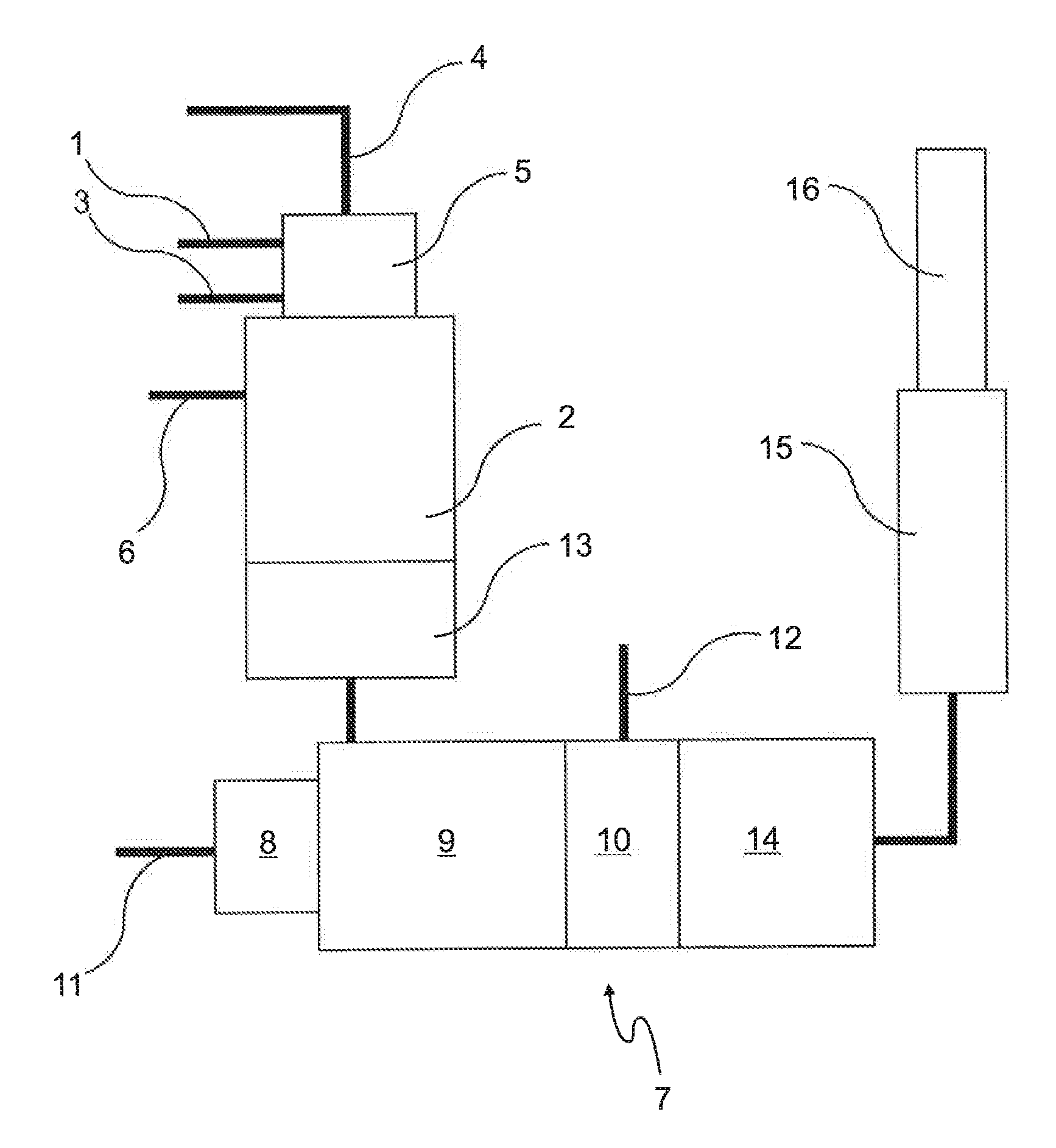Method and apparatus for denenoxing waste gases from nitration
a waste gas and nitration technology, applied in the field of denenoxing waste gases from nitration, can solve the problems of ineffective waste gas method, high cost, and inability to efficiently use the method for waste gases
- Summary
- Abstract
- Description
- Claims
- Application Information
AI Technical Summary
Benefits of technology
Problems solved by technology
Method used
Image
Examples
Embodiment Construction
[0025]The present invention is based on the finding that the hydrogen-rich waste gas stream obtained during the hydrogenation of the organic nitro compounds can be separated out and reacted with the NOx-containing waste gas stream. In this way, not only are the nitrogen oxides, such as NO, NO2and N2O, eliminated from the NOx-containing waste gas stream but at the same time the quantity of the hydrogen-containing waste gas stream obtained, which would otherwise require separate disposal, e.g. by combustion, is reduced. The hydrogen-containing waste gas stream often comprises other volatile by-products of the hydrogenation reaction in addition to hydrogen, such as e.g. ammonia or aliphatic amines, which can also react with the nitrogen oxides at the reaction temperatures according to the invention.
[0026]Depending on how high the hydrogen concentration is in the hydrogen-containing waste gas stream, the method according to the invention can be implemented without the use of additional ...
PUM
| Property | Measurement | Unit |
|---|---|---|
| temperature | aaaaa | aaaaa |
| temperature | aaaaa | aaaaa |
| temperatures | aaaaa | aaaaa |
Abstract
Description
Claims
Application Information
 Login to View More
Login to View More - R&D
- Intellectual Property
- Life Sciences
- Materials
- Tech Scout
- Unparalleled Data Quality
- Higher Quality Content
- 60% Fewer Hallucinations
Browse by: Latest US Patents, China's latest patents, Technical Efficacy Thesaurus, Application Domain, Technology Topic, Popular Technical Reports.
© 2025 PatSnap. All rights reserved.Legal|Privacy policy|Modern Slavery Act Transparency Statement|Sitemap|About US| Contact US: help@patsnap.com

